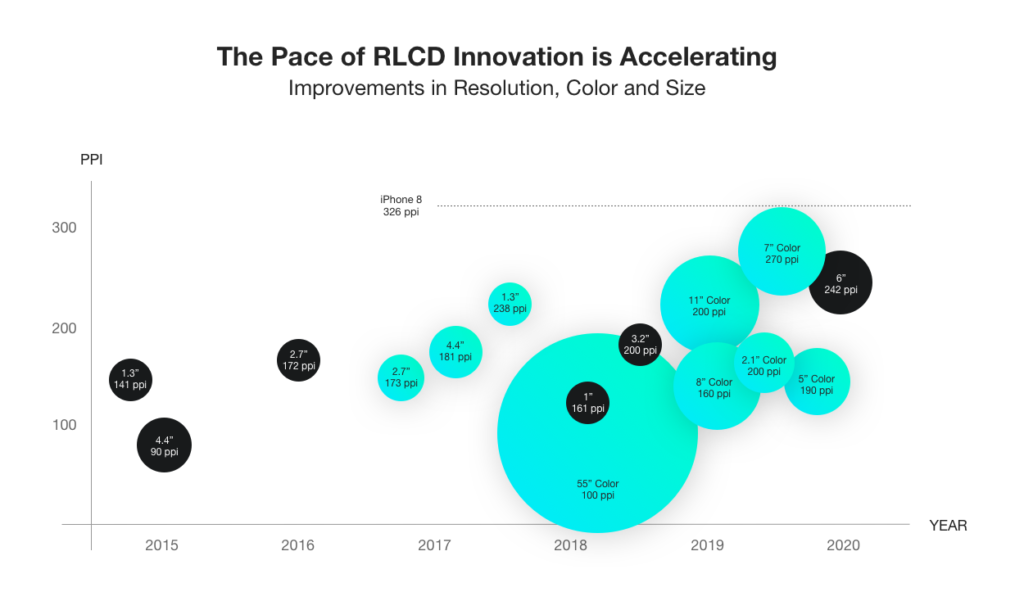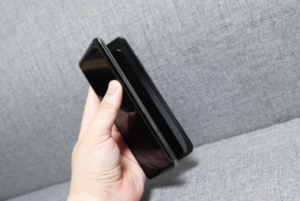RLCDs Are Getting Better Very Quickly
It seems like just recently that reflective LCD displays weren’t up to speed with other displays — and that’s not far from the truth. Just 5 years ago, RLCDs were small with limited pixel density and poor colors. That’s not to say they weren’t ready for use. Those sizes and densities are great for many uses — wearables, industrial devices, etc. But RLCDs are now within the range of high end OLED and LCD consumer devices like the iPhone 8. Take a look at how RLCDs have evolved.

But What’s Next for Reflective Device Displays?
- Foldables (or potentially malleables?)
- Phones, in particular, are experimenting with folding display tech, and some companies are looking for even more exciting form factors — like the expandable screen from TCL. But only time will tell if folding a screen is an enticing feature or just a gimmick.

- Low power
- With concerns of energy dependence, battery tech shortcomings, and more and more usage, low power is a must for most new devices. And as one of the biggest power draws, designers and engineers will start looking to the screen for efficiency. It might take a while for this to happen in the consumer world, but industrial devices are already starting to implement more efficient screens.
- IoT everything (IoET)
- As more and more machines and devices connect to the internet, more and more displays will be required. Connectivity will require some amount of interaction, the displays shouldn’t draw too much power.
- Durability
- As devices become more complex and more dependable, people and businesses will be using them more — likely in harsher conditions or high pressure systems. A fragile device won’t do, and screens, in particular, will need to be more robust and work wherever the job may be.
- Sunlight readability
- As adventure tech evolves and we encourage children to spend more time outside (even with their tech), users are going to need to see their screen in general daylight. And backlit or OLED displays don’t exactly excel at that.

- Eye health
- With a growing dependence on screens, device manufacturers will look to ease the burden of the dreaded blue light, and help users maintain healthy eyes.
- High refresh rates
- For consumer devices, high refresh rates offer a pleasing, extremely smooth appearance. And as innovation in devices focuses more on the interior components, device makers will look for a new way to show off
- MicroLED
- This is still developing, and not really ready for primetime despite Samsung, LG and Apple’s best efforts. It’s exciting to look at, but we won’t see this in the market for several years and will be limited to small displays.
How can Azumoinnovate for you?




